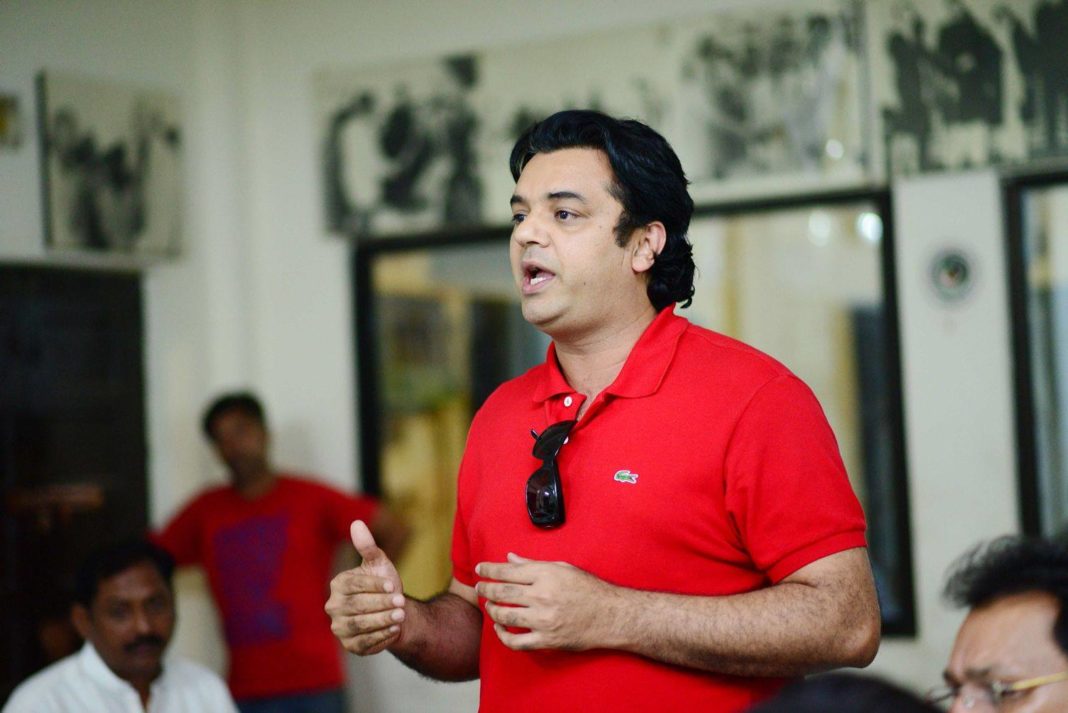By: Hadia Mukhtar
As the Taliban aggressively make inroads to the north and south of Kabul, the Afghan National Army has failed to put up significant resistance. Such military feat has enabled the Taliban to make considerable headlines in international media. Reports iterate that the Afghan government could collapse six months after US withdrawal in the wake of the relentless Taliban’s advance. Though the two sides have agreed to expedite the intra-Afghan dialogue in the two-day weekend parleys in Doha, what is missing is the clear framework for these negotiations.
Stalemate in the power-sharing formula
From the Taliban’s end, it is apparent that they desire to restore the old order before entering into any power-sharing formula with other Afghan factions. Their quest for victory has led Afghanistan into a whirlpool of chaos and anarchy, sucking regional countries into the conflict. The rocket attacks in Kabul close to the presidential estate during the Eid prayers following Doha talks are portentous and unpromising for lasting peace.
With the exodus of US troops from Afghanistan and the speed at which the Taliban has advanced northwards, fears reign that power vacuum might emerge again as the intra-Afghan talks have made little headway. As the battlespace in Afghanistan straddles the border with Pakistan, new challenges are in store for the latter. With competing factions within Afghanistan pitch for influence and the regional states turn to safeguard their stakes checkmating chaos to secure a stable future in is dire straits.
Despite the recurrent meeting of the Afghan government and Taliban’s meeting in the Qatari capital in the presence of top leadership and facilitation from US and EU representatives to push the negotiated political settlement forward, hopes for some breakthrough are dismal. The major impediment lies in the difference between the two sides vis-à-vis priorities. Whilst the Afghan government pitch for a ceasefire before any dialogue, the Taliban remain firm on the establishment of the Islamic Emirate on strict Sharia principles.
Moreover, the Taliban’s narrative on an “all-inclusive” system of government comprising all segments of Afghan society and ethnic groups contradicts the Afghan government’s stance. Their stance on elected democracy and pluralistic political framework in Kabul remain vague and nebulous. Also, their views on education and women’s role in the political and economic sphere remain highly ambiguous and contradictory in the wake of their staunch narrative of restoration of the “Islamic emirate”.
One reason why there isn’t any coherent policy in peace talks is the increasing divide within the Afghan government and other anti-Taliban factions. The ex-Northern Alliance warlords including Ahmed Masood, Dostum, and Hikmatyar also do not support Ashraf Ghani and are ready to fight independently or enter into an alliance with the Taliban in return for some recompense. Many Afghan leaders blame the presidency of Ashraf Ghani for his inflexibility towards a collaborative power-sharing formula. There are emerging voices for the incumbent president to step down and create space for a more acceptable interim administration. However, there appears to be no impartial or undisputed leader who could unite disparate Afghan factions. The common thread forming the interest skein for all, however, is a stake in the Afghan power pie.
Further fragmentation of Afghan social and moral fabric can be gauged by the rise of regional militias led by the warlords. In the wake of a mishmash of political interests, where ISIS had ingrained its foothold in the Afghan eastern provinces, the fear of the fragmentation of the country has manifold making the peace process grim and challenging. Many worrisome reports elucidate warlords having links with regional countries such as Iran and Central Asia have diminished the writ of state keeping the pot boiling in Afghanistan denying the people fruits of peace and stability
In the recent weeks ahead of the Doha talks, the Taliban’s blitzkrieg-like control has become more spectacular. Heavy casualties faced by the Afghan government bear testimony to their unrelenting hold in the country. More than that, the group controls major trade routes with neighboring countries and border crossing denying the government at Kabul the source of income from transit fees and customs duties.
Although such strategic military gains have given the Taliban considerable clout over Afghan politics, their objectives of military takeover of the country will not be acceptable by the international community. More than that, they cannot rule Afghanistan without international recognition or legitimacy.
This entails that though the US has withdrawn from Afghanistan, the US is not out of the Afghan scene. President Joe Biden has pledged to provide the Afghan government considerable support and the Qatari base is been used to train Afghan forces. Thus, it has become imperative for the Taliban to seek a unanimous political deal along with a more rational approach from the Afghan government.
Though the latest Doha talks might have failed to break the deadlock the regional countries need to play a responsible role to push the warring sides towards a result-oriented agreement. Agreeably, peace talks are challenging between parties who have been involved in a protracted conflict. Nonetheless, they are the wise option to steer the country from the ravages of war.
Indian involvement in Afghanistan vis’a vis Pakistan
Former US President Donald Trump presented his South Asia policy where he emphasized the need for a continued Indian presence in Afghanistan. Undeniably, the Indian nexus with the Kabul government had been evident in the past to keep Pakistan constantly engaged at the western border. Furthermore, India has also spent around $3billion on the Afghanistan reconstruction plan and maintains excessive clout over the spillover of militancy from Afghanistan. The objectives of hybrid warfare by fuelling insurgency in Baluchistan and ensuring a haven to the Baloch militants in Afghan soil can only be fulfilled with India’s continued connection with the political elites at Kabul. Moreover, continued Indian influence is also a political card to monitor Chinese clout and the subsequent Belt and Road initiative. As regional rivals had a military face-off at Ladakh that triggered the age-long border dispute, Indian presence in Afghanistan has its motives for becoming the regional hegemon and fostering the US-Indo strategic alliance vis-à-vis Pakistan-China nexus.
India’s reassertion in the Changing Afghan Chessboard
As the Research and Analysis Wing operators hastily evacuate their nest in Kandahar in the wake of the military advance by the Taliban fighters, they leave no stone unturned to taint Pakistan’s international credibility. Irrefutably as the US withdraws from Afghanistan and the Taliban militarizes the Afghan land, Indian influence is receding. Earlier, it had exercised significant clout in Afghanistan’s political and economic domains through its hefty $3billion investment and a nexus with Afghan leadership. Moreover, by ensuring transit trade feasibility to land-lock Afghanistan through developing the Chahabahar port in Iran, it was able to create the India-Afghan-Iran nexus against Pakistan. Along with keeping Pakistan engaged in its western border, India was successful in constructing an infrastructure of isolating and targeting Pakistan through its state-sponsored terrorism and mobilizing the Baloch insurgency to disintegrate, discredit and demoralize the state writ.
Led by the Ministry of External Affairs (MEA), the Indian policymakers are ensuring that they are still in the Afghanistan game. Scrutiny on Indian diplomacy and media maneuvering elucidate that India is determined to guard its core national interests to achieve its objectives as the IEA fighters make their advance. Essentially, the Indian media is openly condemning the US administration under President Joe Biden for leaving them in the lurch as it had been targeting its hybrid warfare against Pakistan on American shoulders for long.
Indian mood swung significantly when the Taliban gave cold shoulder to MEA in Doha and the increased use of Taliban as “terrorists” in their media is the obvious result. According to some reports, the Indian establishment sent Air Force cargo planes to fetch the RAW operators had ammunitions to help the Afghan military fight the IEA. Whether the Indian establishment desires a breakthrough with the Taliban or secures its strategic interests by consolidating its nexus with the Kabul government reflects Indian ambiguity or rather its real face.
Additionally, it seeks to play its trump card by inciting regional sensitivities against Afghanistan and turning its neighbors such as Iran, China, and Central Asian Republics against it. Iran is reminded of the Shia-Sunni divide during Taliban rise of power and subsequent Afghan Shia’s plight whilst Russia, China, and CARs are recapped of the spill-over of terrorism across borders.
Furthermore, the Indian media is playing the Pakistan card by blaming it to be the source of all problems in Afghanistan and the region. Although the narrative is overrated, it still adds fuel to the fire by spreading propaganda against Pakistan through diverse means. Some RAW-sponsored elements and PTM are towing the narrative that the Taliban is the wing of the Punjab army who aim to make Afghans their slaves.
Through deft diplomacy and informational maneuver, Pakistan needs to rebut Indian propaganda. It has to reiterate how India employed her intelligence apparatus in Afghanistan to bleed Pakistan white for the past two decades. Through adept coverage, there is a need to explicate how India is a spoiler in the region and has attained disproportionate mileage in Afghanistan to destabilize Pakistan. By building an extensive intelligence network in spaces provided by NDS and US in Kabul, Kandahar, Herat, Jalalabad, and Mazar-e-Sharif and supporting insurgent factions in Pakistan, it had kept the Pak-Afghan border on fire for years.
Pak-Afghan ties on the crossroads
Pakistan is the immediate beneficiary of the Intra-Afghan dialogue and subsequent peaceful transition of power post-US withdrawal. However, recent events such as the alleged abduction of the Afghan ambassador’s daughter, the frosty exchange between PM Imran Khan and Afghan President Ashraf Ghani at Tashkent, and the Afghan Vice President Saleh’s allegations on Pakistan for sabotaging the peace deal has placed the Pak-Afghan ties under strain.
Undeniably, Pakistan has been working untiringly to broker a power-sharing political arrangement in Kabul so that the horrors of past civil war could return. The state and military establishment along with the foreign office are engaged dedicatedly to ensure an Afghan-owned and Afghan-led peace process.
Kabul’s hawkish stance towards Pakistan
Kabul government’s unjustifiable claims regarding Pakistan’s negative role in the Afghan conundrum were brought to the fore at the multi-lateral conference at Tashkent has given a deep blow to the Pak-Afghan ties. Earlier, the Afghan vice president Amr Saleh minced no words in blaming Pakistan for providing air space to the Afghan Taliban during clashes between insurgents and Kabul at Spin Boldak.
Nonetheless, the Foreign Office on 15th July, has rejected these allegations and has reiterated Pakistan’s stand committed to lasting peace in Afghanistan and will continue its endeavors irrespective of the detractors. It reiterated the FO narrative by claiming,
“We acknowledge Afghan Government’s right to undertake actions on its sovereign territory. However, as alleged by the Afghan Vice President, Pakistan Air Force never communicated anything to the Afghan Air Force. Such statements undermine Pakistan’s sincere efforts to play its part in an Afghan-owned and Afghan-led solution.
“Pakistan lately rescued 40 ANDSF all ranks who fled to Pakistan and returned them to GIORA with respect and dignity, with a declared offer to ANDSF to provide all logistical support as requested”
As the scenario in the backdrop of intra-Afghan dialogue continue to worsen it is apparent as the Western-backed Kabul government crumbles, the Ghani administration and his entourage choose to deflect the blame for their failures towards Pakistan. As peace talks take a backseat with Ghani’s postponement of the peace conference hosted by Islamabad and the impasse over Doha talks, the chances of coalition government seem slim.
The key political leaders in Afghanistan must understand that Pakistan’s role and input in the process are crucial even if the country’s influence on the Taliban has diminished considerably over the years. Bearing in mind Pakistan’s cultural, historical, and geographical proximity to Afghanistan, Pakistan cannot be left out of the Afghan equation. Thus, accusing Pakistan of the failures of the Kabul government is groundless. No country other than Pakistan would desire a peaceful Afghanistan since it had faced the brunt of Afghan anarchy and conflict through the spillover of militancy, terrorism, and refugee crisis. Instead, Ghani and anti-Pakistan hawks in Kabul should answer on why the US and the NATO forces, the world’s most powerful military machine were unable to completely dislodge the Taliban and put the lid on insurgency and terrorism despite their two decades of occupation.
Thus it becomes clear that the US and its allies have lost the Afghan war and America’s protégés in Kabul are not in a position to blame Pakistan particularly when the Afghan army is unable to defend itself. Although mistakes have been made by Pakistan in the past when it recognized the Taliban’s government in 1996 along with Saudi Arabia and UAE, this time, the government is following a more balanced approach. The top military and civil leadership have reiterated that the country does not play favorites in Afghanistan. Thus, instead of imputing Pakistan for its incapability, the Kabul government should foster reason, avoid vitiation and collaborate with Pakistan and regional countries to hammer out a solution before Afghanistan collapse into lawlessness and chaos once again.
The Bottom-line
The US withdrawal from Afghanistan on 4th July has led to emerging developments in the South Asian Region. By taking the leaf from history, one can trace the origins of Afghan Imbroglio from the start of the Saur Revolution in 1979 to the resultant power vacuum as the US left Afghanistan without any comprehensive exit strategy that led the country into the ravages of war and conflict.
At that point in history, the region saw the rise of the Taliban and the advent of Al-Qaeda as they managed to ingrain their footsteps on Afghan soil. Thus, Afghan soil because the haven and launching pad for their terrorism as they penetrated the grassroots of international order. To ensure that history could not repeat itself, Afghan peace is essential for lasting stability in the region. Since the geopolitics have evolved considerably over time, Pakistan remains firm on the narrative that “Pakistan is a facilitator, not the guarantor of peace in Afghan”. The civil and military leadership stand firmly on the Afghan-owned and Afghan-led peace process by highlighting the significance of a legitimate Afghan government which is a prerequisite for maintaining Afghan sovereignty and securing the national interest of both states.
The range of military operations within its borders post 9/11 highlighted Pakistan’s determined commitment to the war against terrorism. Such operations received international coverage and credibility as the community lauded Pakistan’s steadfast efforts. These efforts remain persistent to this date through border security measures through Pak-Afghan border fencing, initiation of a border control system through upgraded biometrics, and sealing loophole points on the Pak-Afghan border. The regular troop deployment has put the lid on militancy and terrorism.
Pakistan has suffered greatly during the period of Afghan civil war and War and against terror through the spill-over of militancy and the refugee influx. Having faced this situation before and suffered the repercussions of faulty decisions to host Afghan refugees, Pakistan is taking prudent and timely decisions to overcome the volatile situation across the border. The influx of refugees may bring back militancy and terrorism in Pakistan as terrorist outfits may infiltrate alongside refugees. And it will be difficult for the border authorities to differentiate between them. As the Taliban has stated that they will not allow the Afghan soil as a launching pad for terrorism and a haven for terrorist outfits, Pakistan needs to drive this point ahead with greater emphasis. The government needs to enforce counter-terrorism and law-enforcement capabilities to tackle this reintroduced threat brimming upon borders.
The writer is a geopolitical analyst with a keen interest in international politics. She can be reached at [email protected]








